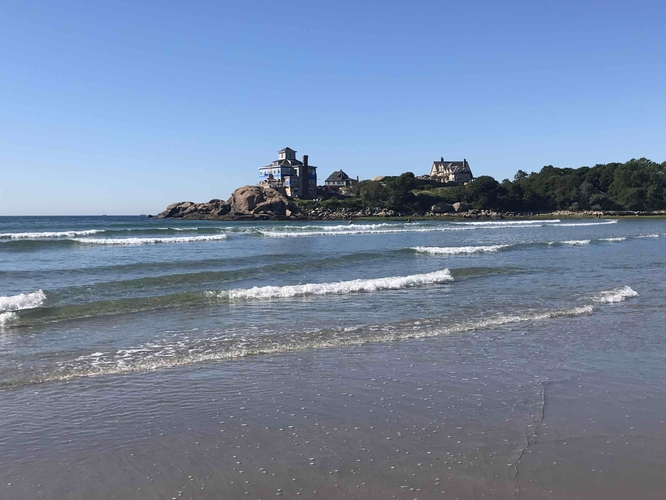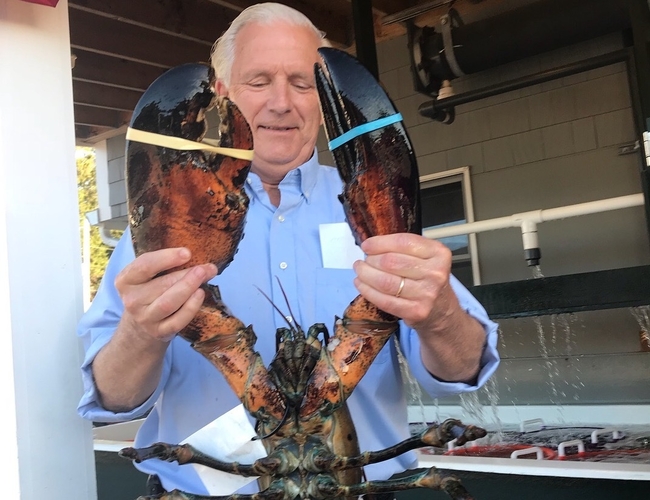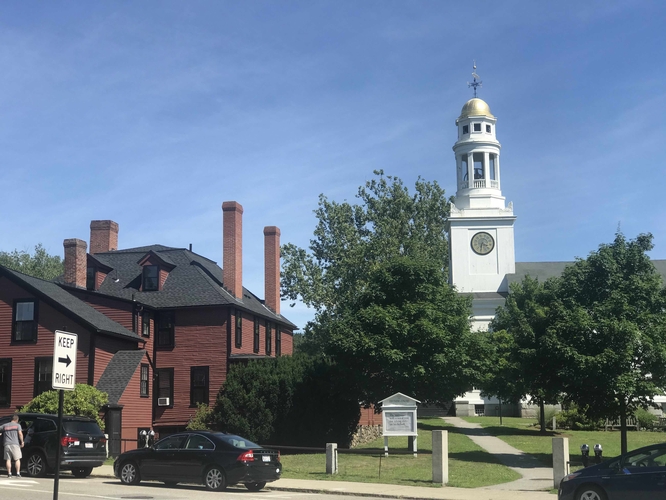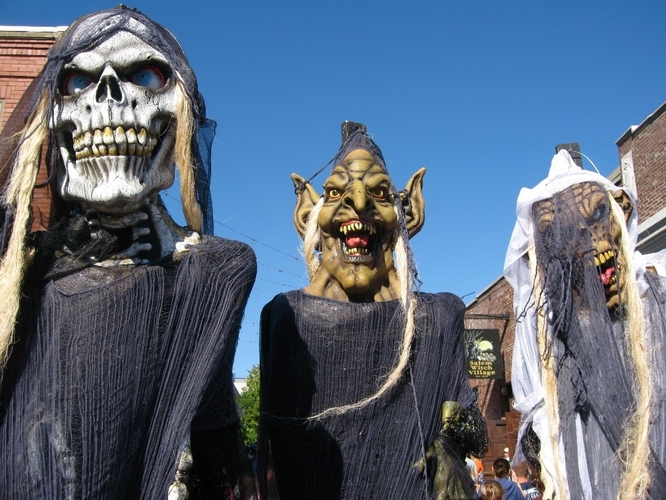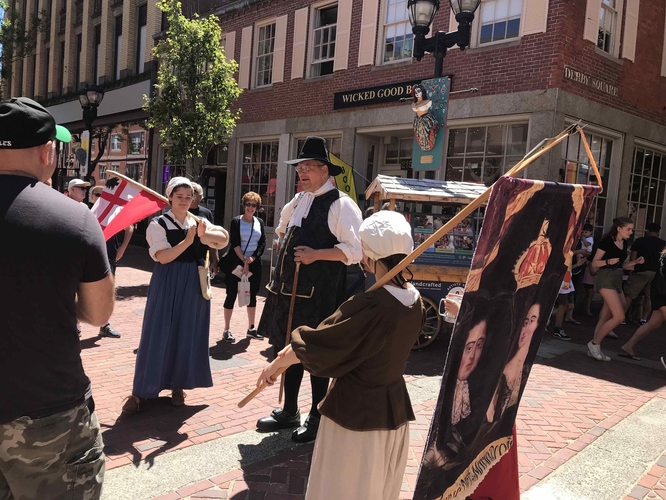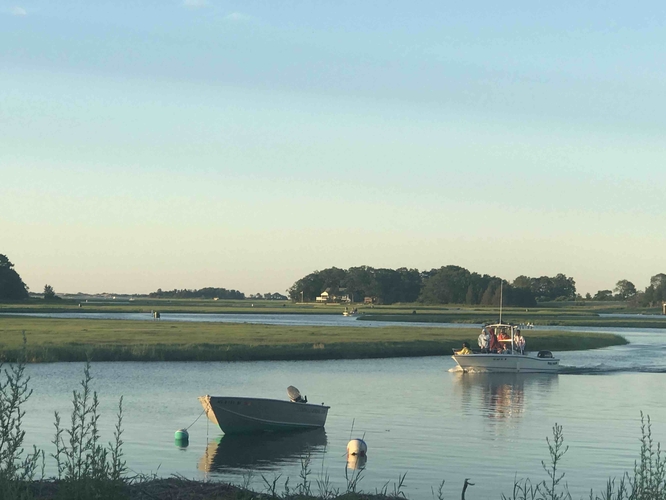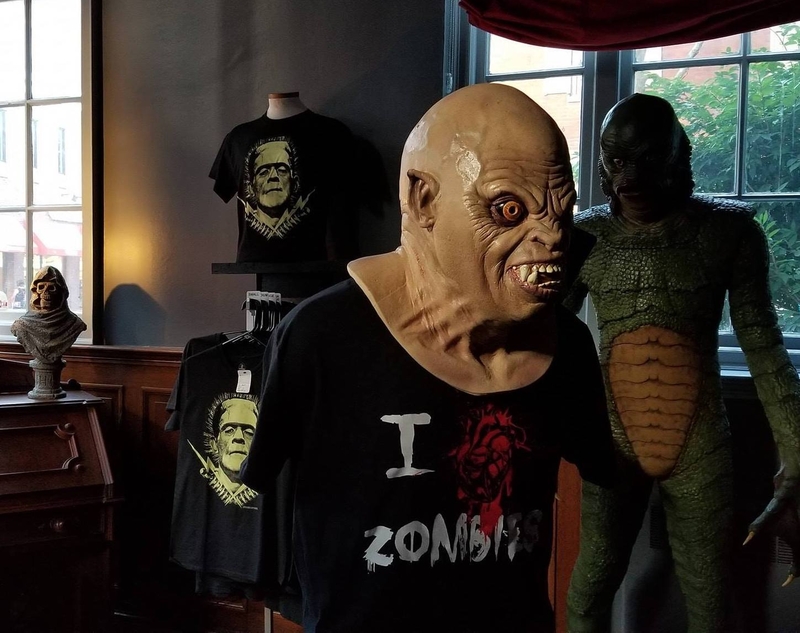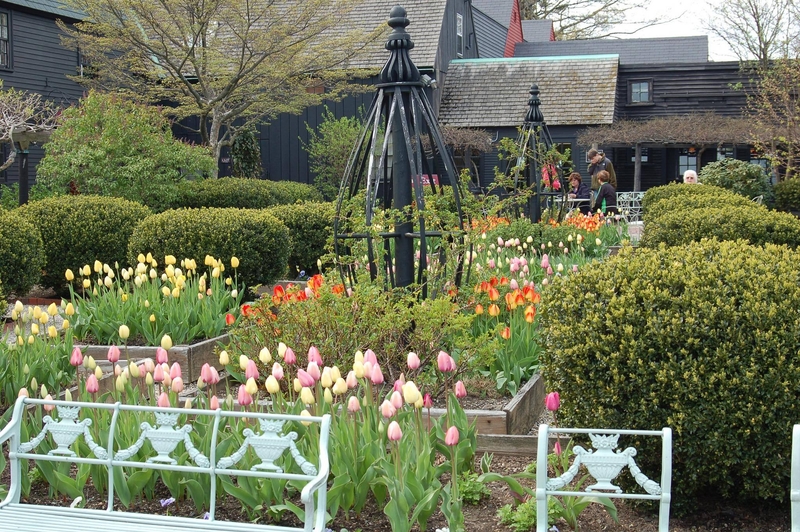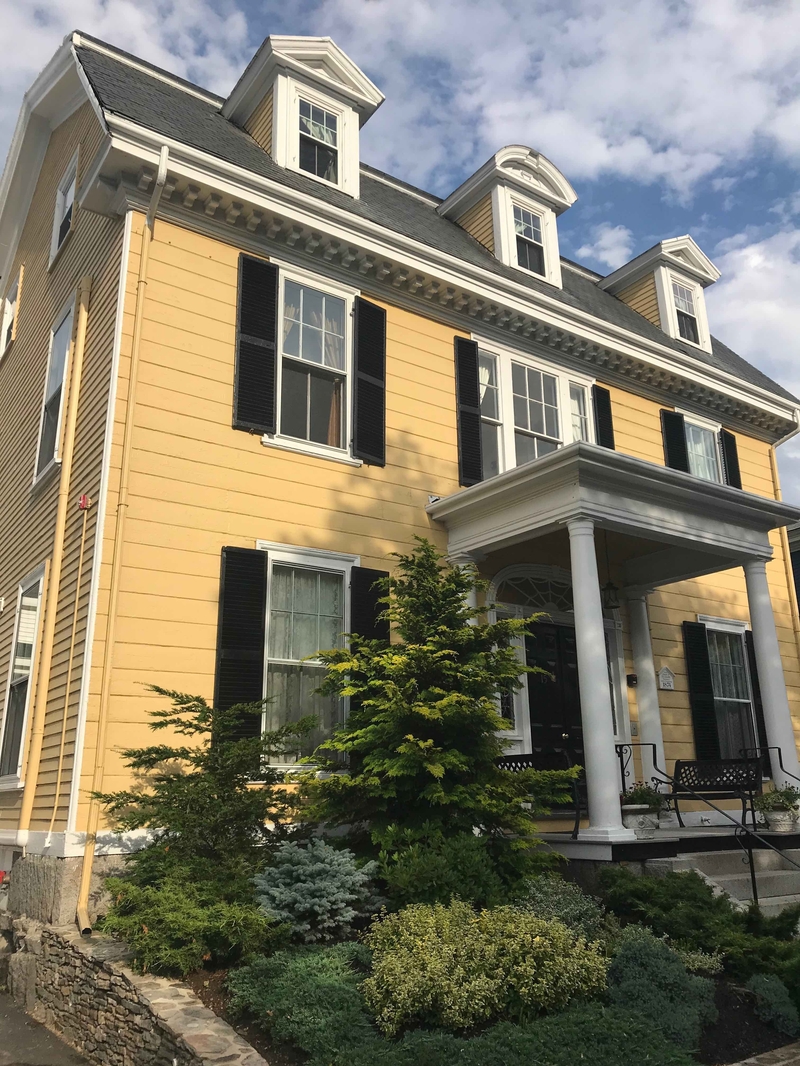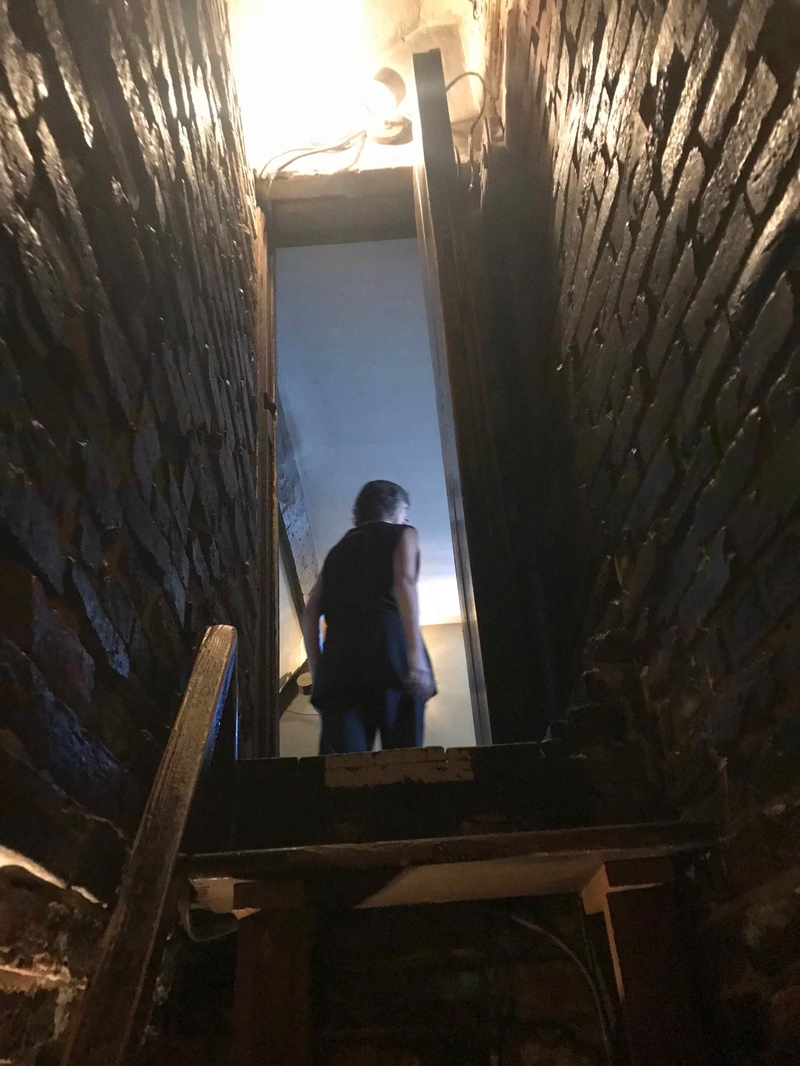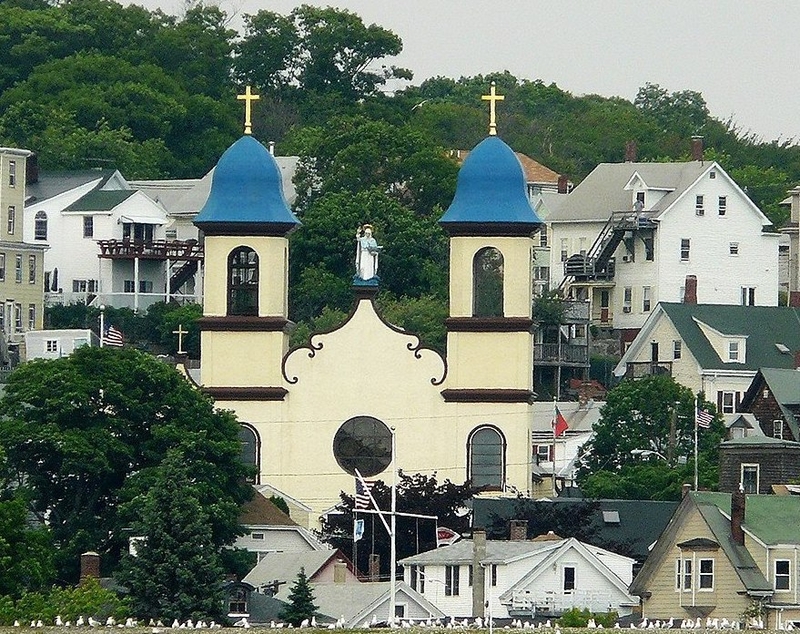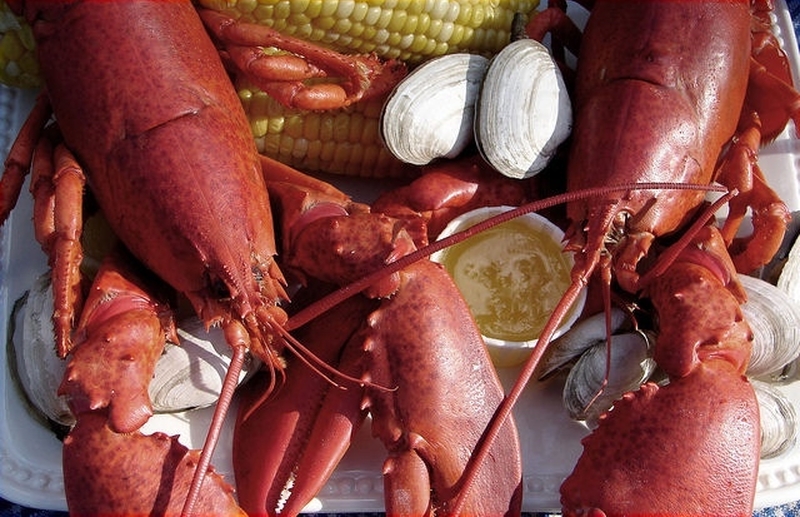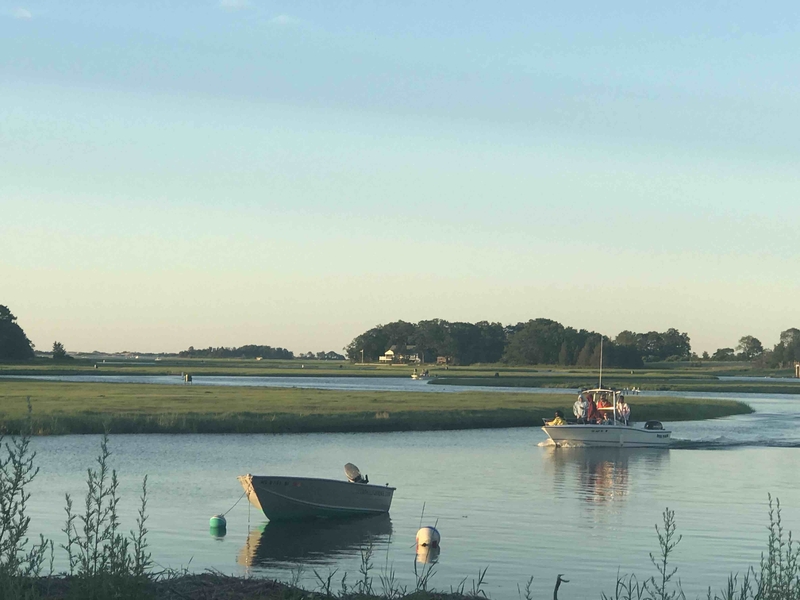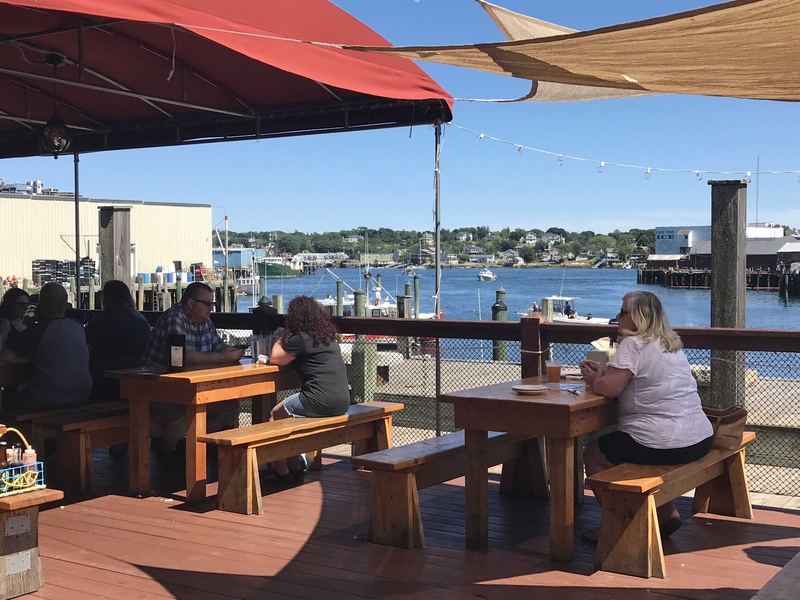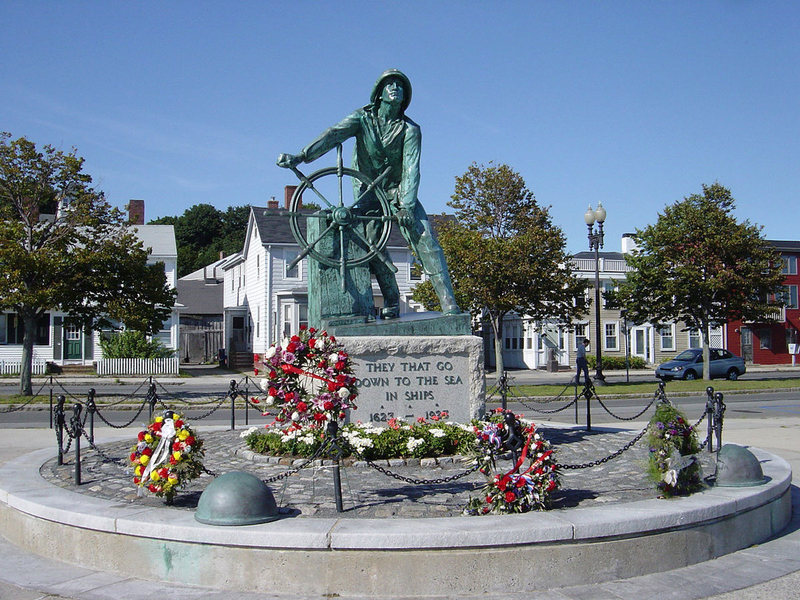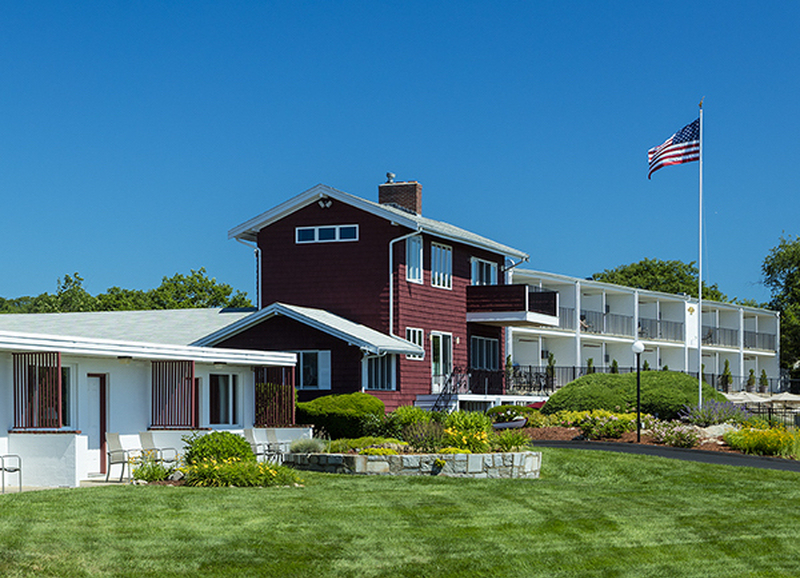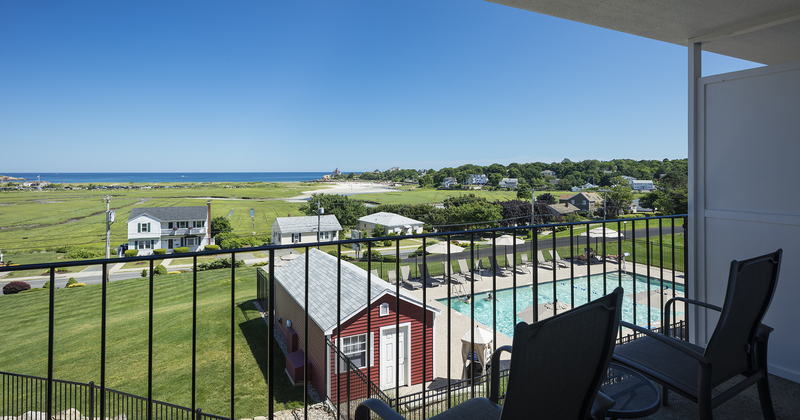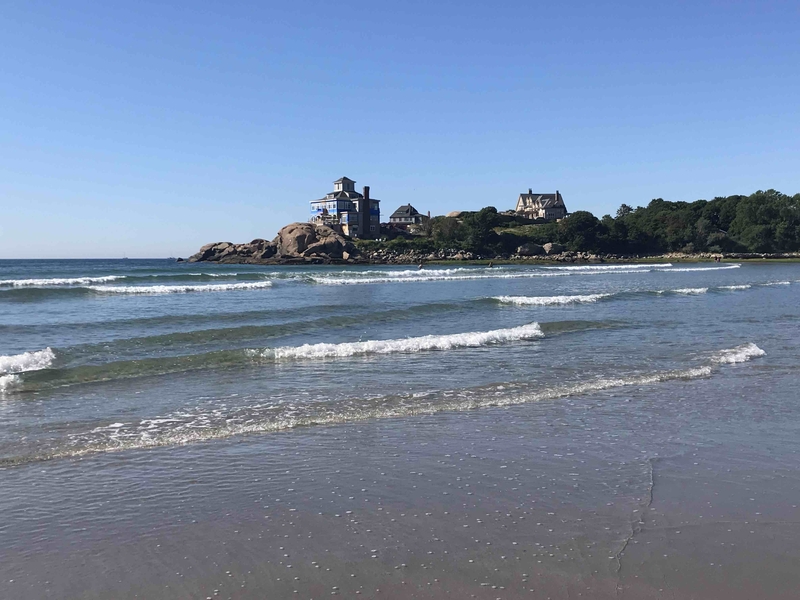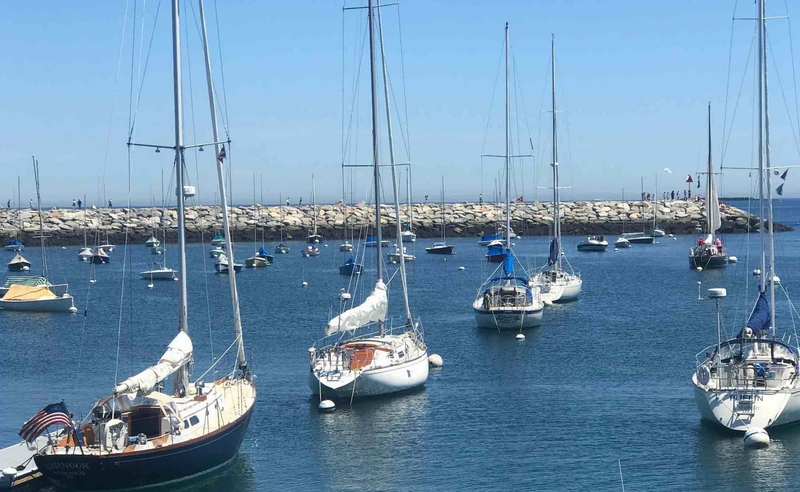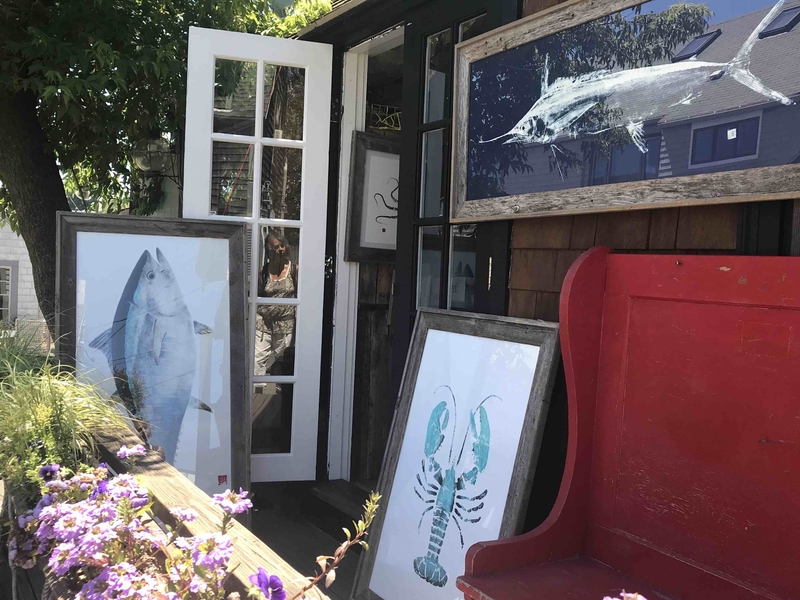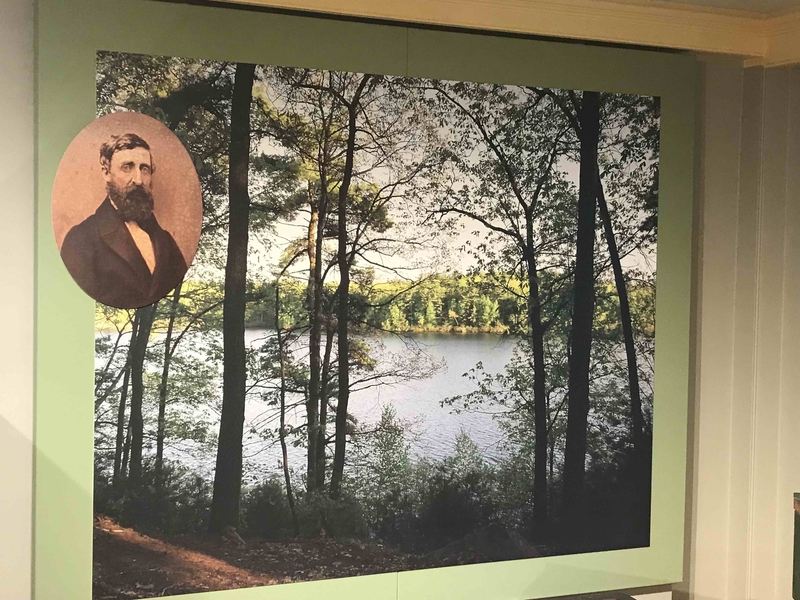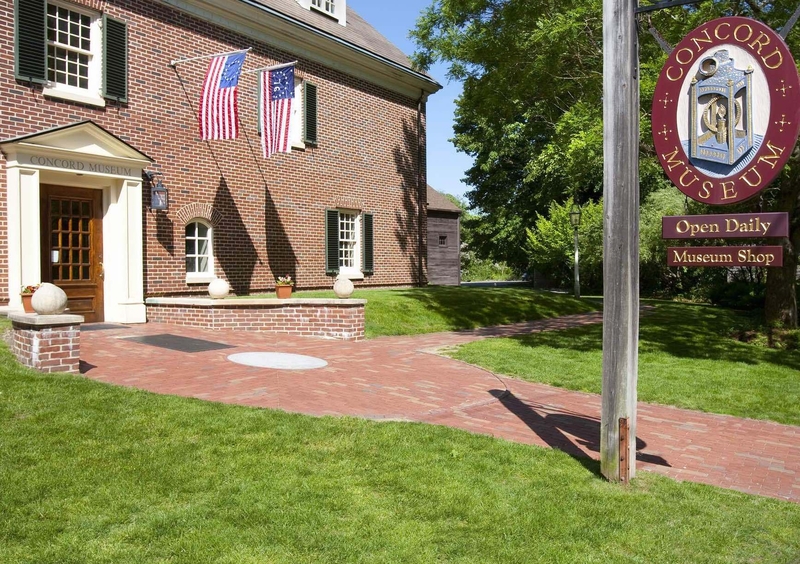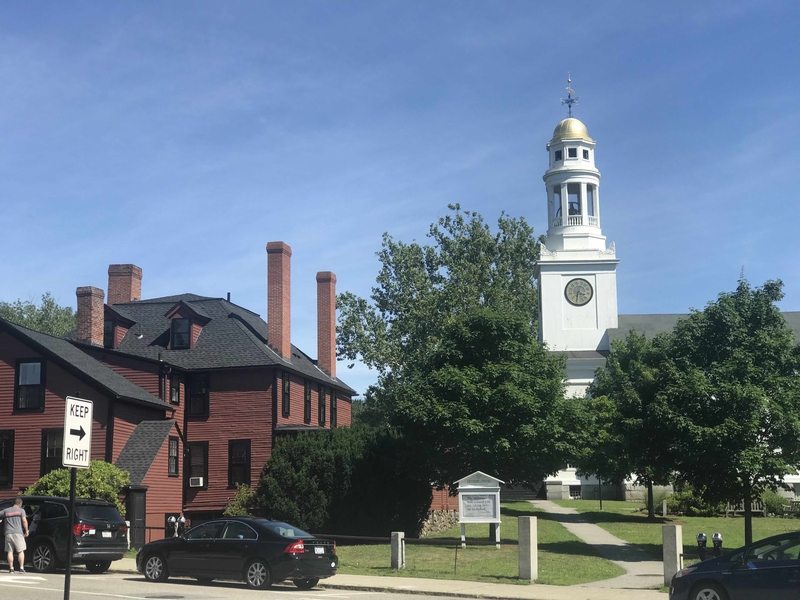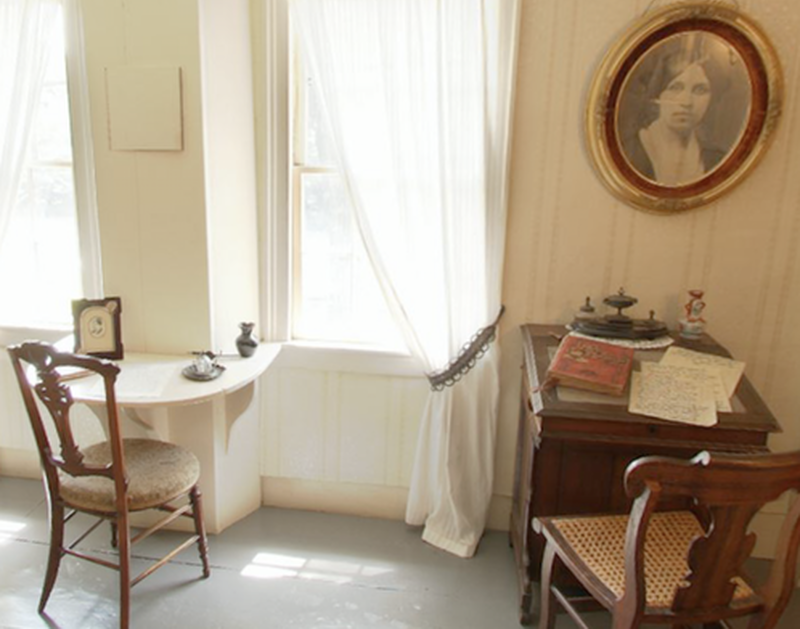From Little Women to large lobsters, Neil Sowerby has a cracking time
JUST love literary ‘fake news’. Herman Melville apparently had never visited Nantucket and met its whalers before he wrote Moby Dick. And The House of the Seven Gables was down to just three when first encountered by Nathaniel Hawthorne, who immortalised it in the novel of that name. A future owner restored the gable count to capitalise upon its subsequent celebrity.
The benign, carved Virgin cradles a ship, praying for the town’s brave fishermen to return safely; so many never did, perishing in the icy seas off Newfoundland
How tall Louisa M Alcott’s Little Women were – based upon her own family – I’m not quite sure; the title refers to sisters having to grow up fast with their father away in the Civil War.
Little Women and the actual House of the Seven Gables, now a museum, both celebrate significant anniversaries this year. The Alcott novel, recently dramatised vividly by the BBC, was first published 150 years ago, while the House of 7G has now stood for 350 years on the seafront at Salem. Hawthorne’s birthplace is adjacent in the lush garden, but that building was moved lock, stock and gable from downtown in 1958.
All part of the great Massachusetts Literary Heritage, in search of which we made a pilgrimage north from Boston to Salem, Gloucester, Rockport and Cape Ann, veering inland to take in Concord, cradle of the American Revolution and epicentre of an equally extraordinary intellectual game changer. All those 19th century names – Alcott, Hawthorne, Thoreau and the ringmaster, Ralph Waldo Emerson.
If this all sounds a touch worthy, it isn’t. The road trip takes in scenery and settlements that are among the most glorious in New England. Fuelled by lobster rolls and craft IPA along the way, naturally.
And it’s so accessible from the North of England thanks to Thomas Cook Airlines' direct eight-hour service from Manchester into Boston Logan International Airport. The airport is only minutes from the city and with its seafront location it’s an easy hop to the ‘North Shore’, focus of the first leg of our Alamo rental car road trip.
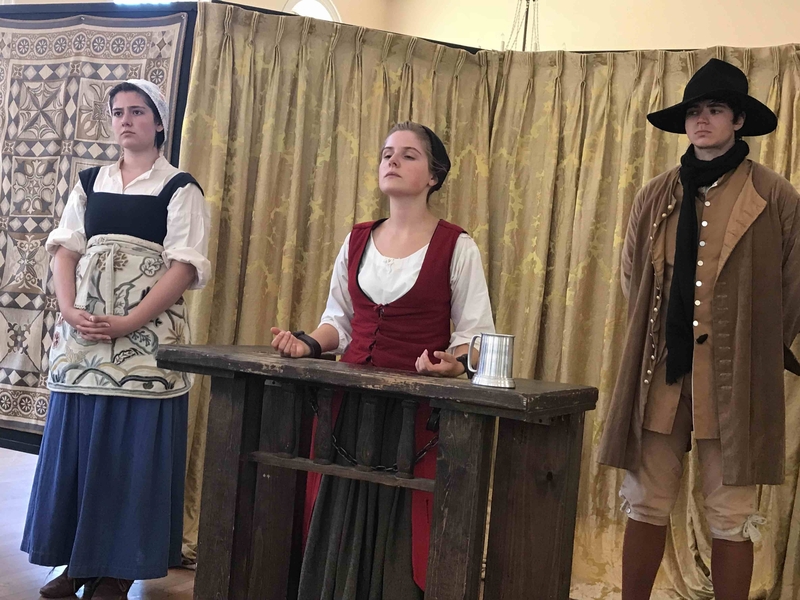
First port of call Witchy, Kitschy Salem. Well, it is the perfect place to stock up for Halloween, but it also a civilised peach of a small town, able to reflect upon as well as exploit its fanatical past.
Take History Alive’s ‘Cry Innocent: The People Versus Bridget’, immersive street theatre which involves you in the arrest and court hearing of an accused woman during the infamous Salem Witch Trials of the late 17th century. At the end of a riveting hour, where the audience got to question the feisty lass, the majority of us pronounced her ‘Not Guilty’. Fake history re-write. On June 10, 1692, Bridget Bishop was the first of the 17 victims to be executed.
The Salem Witch Museum offers a comprehensive recreation of the witch hunt hysteria; a variety of ghost tours, wax museums and gift stores (even a selfie-bait statue of nose-twitching Samantha from the TV series Bewitched) cater for the spook trade, culminating in the monstrous fun of Count Orlok’s Nightmare Gallery – target audience the horror/sci fi geek.
The only building with direct ties to the Trials is The Witch House, 17th century home of one of the judges, Jonathan Corwin. More rewarding to visit is nearby Chestnut Street, described by crime fiction doyenne PD James as "one of the most beautiful streets in America”. With its wealth of colonial architecture, bosky back gardens and gentle whiff of ‘old money’ it’s definitely up there.
In contrast the redeveloped waterfront area is definitely seeking the tourist buck, but without feeling at all tacky. We dined overlooking the Pickering Wharf Marina at the terrific Finz Seafood and Grill,took in a couple of beers at the Notch Brewery Taproom, a hip warehouse conversion specialising in Czech and Bavarian style session beers (with just the token IPA).
From here it’s no distance along Derby Street to the Turner-Ingersoll House, more familiarly known as The House of the Seven Gables. Our 40-minute tour of this National Historic Landmark would have been fascinating without the Hawthorne connection as our guide stripped away the architectural palimpsest of the wooden mansion built in 1668 for Captain John Turner, then extended and adapted by subsequent mercantile owners.
Later it was given a Georgian makeover and eventually lost those four gables when ‘modernised’ by another Captain, Samuel Ingersoll. His daughter introduced her friend Hawthorne to it … and the rest is Fiction. In the 1851 novel he wrote: “So much of mankind’s varied experience had passed there — so much had been suffered, and something, too, enjoyed — that the very timbers were oozy, as with the moisture of a heart. It was itself like a great human heart, with a life of its own, and full of rich and somber reminiscences.”
Oh, and spoiler alert, the old house hides a secret stairway, too.
It’s a half hour drive north to Gloucester, gateway to the glorious Cape Ann peninsula. On a whim, as fans of the movie Manchester by the Sea, we detoured via this low-key resort but hardly recognised settings (much of it was shot in Gloucester we later learned – ‘fake filming’!). Compensation? We did get to check out its famous ‘Singing Beach’, where the friction of sand grains rubbed together creates a faint squeaking noise. You had to be there.
Gloucester is America’s oldest working seaport, commemorated by the Fisherman’s Memorial on the Esplanade. A more fascinating link to its seagoing past can be found in the terrific Cape Ann Museum. Visit its collections to engage with the many painters who made Gloucester a significant art colony, but also seek out the Our Lady of Good Voyage statue, from the church of that name.
This benign, carved Virgin cradles a ship, praying for the town’s brave fishermen to return safely; so many never did, perishing in the icy seas off Newfoundland.
As ‘Lady whose shrine stands on a promontory’ she merits a mention in TS Eliot’s The Dry Salvages, third of his Four Quartets, a poem steeped in the beauties and perils of the ocean and inspired particularly by this coastline. Because from the age of five the great poet vacationed here from St Louis with his parents at the Hawthorne Inn (a theme developing here?), a privileged sailor-suited little boy with a nanny in attendance, but also a keen awareness of the other side of Gloucester with its smoking/salting factories, rough dockside and epic trawling voyages.
The statue originally stood on the pinnacle of Our Lady of Good Voyage, place of worship for the nautical Portuguese community; what you see there today is a sturdier fibreglass replica. And, naturally, it’s not the church the young Eliot would have seen; that burnt down in 1914, to be replaced by a rather handsome Mission style edifice.
Lofty Main Street has lots of indie shops and cafes. We gravitated to the Cape Ann Brewing Co tap on the less chi-chi dockside below to talk World Cup with visiting Croatians and sample its Fisherman’s IPA and fish tacos.
Our first supper on Cape Ann was different league, mind. Iconic fish shack Woodman’s of Essex owes its all to a watershed whim 90 years ago when Lawrence "Chubby" Woodman, on a bet, fried up a few clams at his roadside stand. Word spread, the folk came and they still keep coming to this folksy lakeside spot. We sampled the clams but were really bowled over by the fleshiest lobsters we’d ever tasted. Afterwards we were too full to mooch around Essex village’s plethora of antique shops – chic rubbing shoulders with rustic New England style.
An American road trip is never compete without a motel stay, but you have to pick the right one and Vista Motel, our base a few miles outside Gloucester, was classic. Our ‘deluxe room’ with its own carport below overlooked Good Harbor Beach, a glorious family-friendly stretch of sand just 15 minutes’ walk away through the dunes.
From Good Harbor you can motor straight along the coast to picture-perfect Rockport at the tip of the Cape. Wander along Bearskin Neck main drag (named after a bear killed on the quay in 1700) to the breakwater and gaze out into the stupendous Atlantic. Again picture galleries abound, but one oddball hut takes the eye. Fished Impressions, specialises in ‘Gyotaku’, a Japanese art form combining gyo (fish) and taku (stone monument rubbing). Originally Japanese fishermen would make these prints to preserve records of their catches; now it’s the stuff of quality art gifts. Here they use the hardcore method of coating the fish directly with soluble ink to create the print.
If eating fish is more your priority a must visit is the nearby Roy Moore’s Fish Shack for further fried clams and lobster rolls. We felt a midday cocktail urge so chose instead the rather smart Feather and Wedge on Main Street, where bonuses were cosy barstools, charcuterie platters and live jazz.

After all this seaside inland Concord makes quite a contrast. For US patriots this tidy little town is an essential destination. One of the opening skirmishes of the Revolutionary War between British troops and the local minuteman militia was fought here in 1775 at the North Bridge and is commemorated by Daniel Chester French’s Minute Man statue. To find out more take part in the activities organised by the Minute Man National Historical Park.

We felt like we had our own bit part in history by staying at the cosy Concord’s Colonial Inn on Monument Square, part of which dates back to 1716. The middle building, where the front desk is now, served as an arms and provision storehouse for the patriots and had to be defended bloodily against the British.
What is now Room 24 acted as an operating theatre (No.27 was the morgue) and is now reputedly the most haunted room in a hostelry hardly short of spooky sightings. For your best chance of a sighting ask for a billet in the old part, not the later annexe.
The Revolutionary times are also well represented in the Concord Museum on Cambridge Turnpike. Our focus, though was on its homage to the clutch of mid-19th century literary figures associated with this rural enclave. Here you’ll find the desk where Henry David Thoreau wrote Civil Disobedience and that great paean to simple living among nature Walden. You can visit nearby Walden Pond where he lived that ecological life. The study of fellow transcendentalist and internationally acclaimed essayist Ralph Waldo Emerson is recreated, too. You can visit his house along the Turnpike as well as Wayside House on Lexington Road, once home to the ubiquitous Hawthorne, but if time is short the essential literary shrine in these parts has to be Wayside’s neighbour, Orchard House, below, long time home of the Alcotts.
This spartan brown frame house, packed with keepsakes, brings to vivid life the entire clan – unworldly philosopher patriarch Amos Bronson Alcott, his long-suffering wife and their talented children, notably gifted painter May and her elder sister Louisa, whose literary earnings kept the family afloat. Pulp fiction and potboilers for the most part – her breakthrough gold mine Little Women she dismissed as “moral pap for the young”.
It was published when she was 36, a decade after they had moved into Orchard House. The half-circle desk she wrote it on is still there, built by Bronson, whose necessary DIY skills are on show throughout the house, as is the evidence of how much he encouraged hsi gifted children in their amateur dramatics, reading and art.
Most moving of mementos are the calla lilies painted on a wall by May, so that Louisa could see them from her bed when she was sick with typhoid pneumonia. She fell ill while serving as a nurse in the Civil War, and the treatment left her a semi-invalid for the rest of her life. She still outlived May, who died in childbirth in Paris in 1879, aged just 39; Louisa died in Boston nine years later at the age of 55.
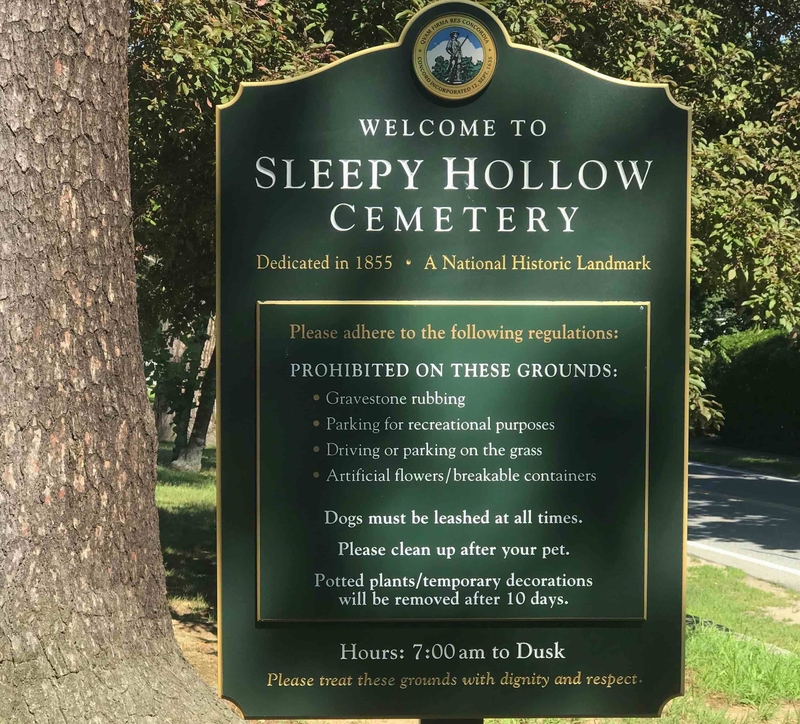
Her bones lie in Concord’s Sleepy Hollow Cemetery, just a five minute walk from the Colonial Inn. The gang’s all here with Thoreau, Hawthorne and Emerson also interred up on its Artists’ Ridge. This 1855 graveyard, one of the most serenely beautiful you will find, was even designed in accordance with Emerson’s aesthetic principle of natural gardens. A place to chill. We chilled. Now that’s what you call Transcendental.
Read the next leg on Neil’s road trip Cape Cod and Nantucket – the New England of your dreams.
Fact file
Neil Sowerby flew to Boston from Manchester with Thomas Cook Airlines.
Travel with Thomas Cook on a literature themed trip in June 2019 from £1,396pp. Price is based on 2 people sharing, includes car hire with Alamo Rent A Car, return transatlantic flights, 2 nights Boston, 1 night Salem, 1 night Gloucester and 1 night Concord. Holidays operated by Thomas Cook Tour Operations Ltd ATOL 1179, ABTA V6896. To book call 08448716650 or visit www.thomascook.com.
Did you know?
With Alamo Rent A Car travellers can expect award-winning service, a range of products and coverage to make their road trip across the USA easy and stress-free.
Neil stayed at The Salem Inn, 7 Summer St, Salem, MA 01970. Stretching across three period houses, the large rooms and suites are trad/boutique with discreetly luxurious touches. Complimentary breakfast and free parking are a plus; the Vista Motel, 22 Thatcher Rd, Gloucester, MA 01930.; and Concord’s Colonial Inn, 48 Monument Square, Concord, MA 978-369-9200.
For full tourism information on Massachusetts visit http://www.massholiday.co.uk and for specific tips on how to enjoy Salem got to http://www.salem.org and for the whole North of Boston area: https://northofboston.org
Our Lady of Good Voyage Church image is by Henry Zbyszynski from Capitola California, USA.


